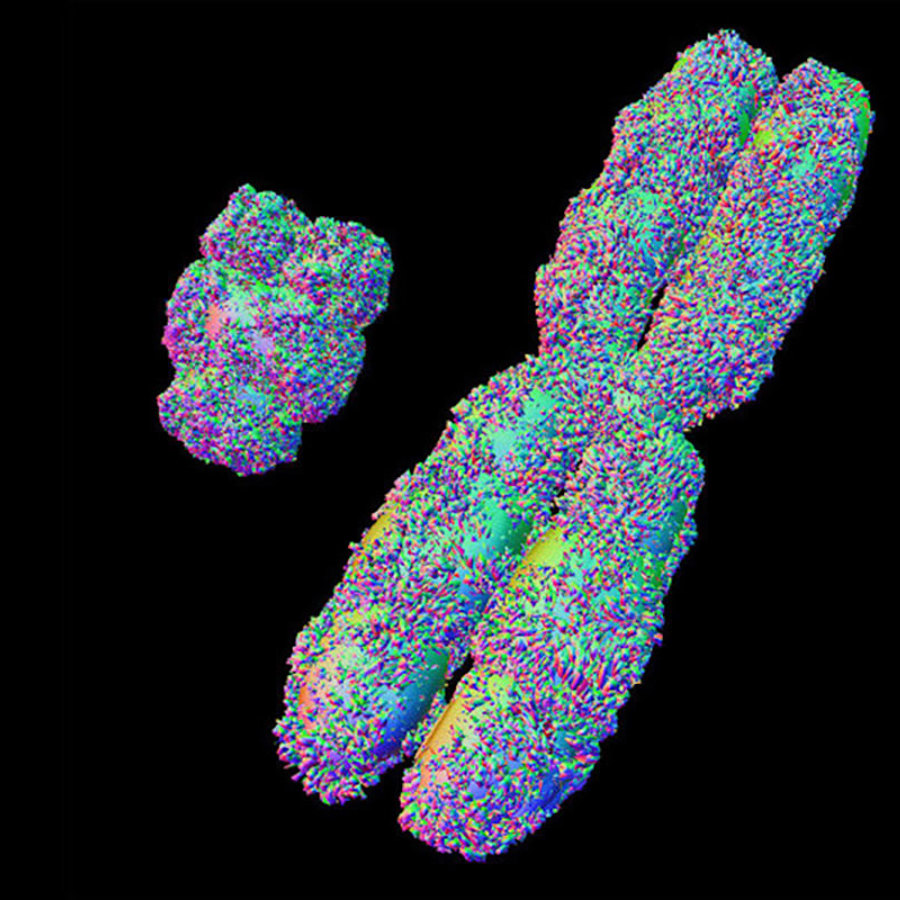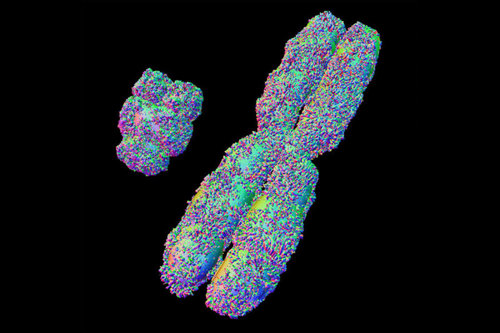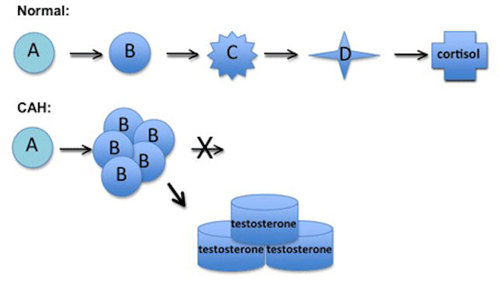
Why are gender tests more complicated than just looking at chromosomes?
September 15, 2009

- Related Topics:
- Genetic sex,
- Gender identity,
- Genetic testing,
- Chromosomes,
- Y chromosome
A curious adult from Connecticut asks:
“I just read an article about a South African teenage girl who was asked to take a gender test after winning an 800-meter race by a huge margin over the other runners. The article said that gender testing was a very complex procedure. Why is it complex? Wouldn't a simple genetic test for a Y chromosome answer the question?”
It seems like it should be really simple! But it isn’t. There is more to being a male than having an X and a Y chromosome, and more to being a female than having two X’s. This is because it isn’t really the chromosomes that determine whether someone is a boy or a girl.
Sex and gender aren’t exactly the same thing. “Sex” refers to the biological or physical characteristics of a person. “Gender” is about a person’s sense of self.
Someone with two X chromosomes is usually biologically female with a female gender identity. And someone with an X and a Y chromosome is usually biologically male with a male gender identity.
But this certainly isn’t always the case! Someone’s gender identity might not match the sex they were assigned at birth. And some people are nonbinary, and don’t identify as having either a male or female gender.

Most of these “gender tests” you mention are actually looking at biological sex, not gender. But even just looking at sex is tricky.
Biological sex isn’t really determined by chromosomes. Instead, it’s partially determined by some of the genes on those chromosomes. And some people end up with one of these genes that work differently. These people often have both male and female characteristics, and may not fit the typical definition of either.
Having qualities of both biological sexes is called intersexuality. That’s just a fancy way of saying that there are some people whose bodies are female in some ways and male in other ways. About 1% of people are intersex. That’s the same proportion of people who have red hair. Intersex people are more common than you might think!1
What I thought I’d do is go over what is looked at in testing and why. Then I’ll go over some of the more common ways that someone can be intersex.
Sex testing
For the first part of the sex verification test, they will probably check for a Y chromosome. But as I said, this doesn’t give you the whole story. So what else will they look for?
They will also check the levels of testosterone in the athlete’s body. Both males and females make testosterone, but adult males usually have more than forty times the amount that females do!
Male humans make a lot more testosterone because it is important for early male development. Without it, no internal or external male body parts are formed. In adult males, testosterone is important for making functional sperm.
So if the female athlete has high levels of testosterone, then that will not align with what we typically expect from someone who is biologically female. The next part of the sex test will probably be to check to see whether the runner has female parts on the outside AND the inside. It is possible to look female on the outside, but not have the usual female parts (like ovaries, for example) on the inside.
So you can see that the results can be tricky to figure out. What if there is no Y, lots of testosterone, and mostly female body parts? Is the athlete female? What if the athlete has a Y chromosome, typical female levels of testosterone, and is female on the outside?
As you can probably appreciate, making a human male or female is a really complex process. Lots of different genes are all part of determining a baby’s biological sex. What this means is that there are lots of ways for someone to not fall into the two conventional categories of male and female.

Common ways to become intersex
All embryos start out on a path to become females. This is the human default sex.
There is a gene on the Y chromosome that starts an embryo down the male path. This gene is called SRY. It is absolutely essential in becoming a human male. And in rare cases, it doesn’t work as usual.
Sometimes a person can end up with an SRY gene on an X chromosome. Now that person starts down the male path. This is called 46,XX testicular disorder of sex development. Around 1 in 20,000 people are thought to have this condition.2
These XX people typically look male and are designated male at birth. But because the rest of the genes on the Y chromosome aren’t present, these XX people tend to not develop fully male characteristics. And they need extra hormones when they reach puberty.
Sometimes a person can end up with a nonworking SRY gene on their Y chromosome. This person now stays on the female path. This is called Swyer syndrome. Around 1 in 30,000 people have this.3
These people look female on the outside and have all of the biologically female internal organs except ovaries. They are typically raised as girls but need hormone replacement therapy to reach puberty.
So should someone with Swyer syndrome be allowed to race against other women? What about the XX person who looks male? Should they race against women or men? This isn’t easy, is it?
You may have noticed that both sets of people need hormones to mature. Another way to be intersex is if something is different in a person’s genes that make or interact with hormones.
Hormones
Hormones are important during your development. If your body doesn't get the right hormones at the right times, things can progress differently than expected. This can lead to a person being intersex.
One way this can happen is if you have a version of a gene called CYP21 that works differently than most people’s. This gene is important in the process of making cortisol. Cortisol is one of the hormones that respond to stress in your body.
People who have certain differences in CYP21 or other genes that affect the process of making cortisol have a condition called congenital adrenal hyperplasia (CAH). This can result in XX females that have male characteristics on the outside of their body.4 So how does this happen?
Well it all has to do with the process of making cortisol. There are many steps to go from a starting point to the final product, cortisol. Think of it like A has to turn into B, which is turned into C, which gets turned into D, which can then be made into cortisol.
People with different versions of CYP21 have a problem making something that is responsible for changing one of the steps into the next step. In other words, these people are missing the thing that makes B into C. If you never make C, then you don't make any cortisol either.
This also means that you are going to have a lot of B hanging around that doesn’t get made into cortisol. Well, B can also be made into other things and one of those is testosterone.

This means that someone with CAH will usually have more testosterone than normal. When you are XX and have a lot of testosterone during development, it can cause you to have both male and female characteristics.
The opposite can happen too. You can have an X and a Y chromosome, but look biologically female on the outside! This can happen when you have certain versions of the androgen receptor gene.
The androgen receptor is activated when testosterone binds to it. This triggers the development of male body parts. Some people have certain versions of the androgen receptor that are less responsive or unable to respond to testosterone at all. This is called androgen insensitivity syndrome (AIS).5
Because people with AIS are unable to respond to testosterone, they don’t develop biologically male body parts. So people with AIS are generally XY with visible female characteristics. They usually do not have female parts on the inside. People with AIS might not even know that they have a Y chromosome!
So, a sex test won’t necessarily give a simple answer. Plus since sex and gender are different, the results of a sex test might not match the athlete’s gender identity – or even come as a complete surprise. And how do you factor in an athlete’s internal sense of who they are? That’s just as important as the results of a sex test (or perhaps even more important!). The simple reality is that you can’t neatly sort humans into simple “male” and “female” categories. That makes this a very tricky topic!
Editor’s Note (4/10/21): This article was lightly edited to clarify sex vs gender.

 Skip Navigation
Skip Navigation
